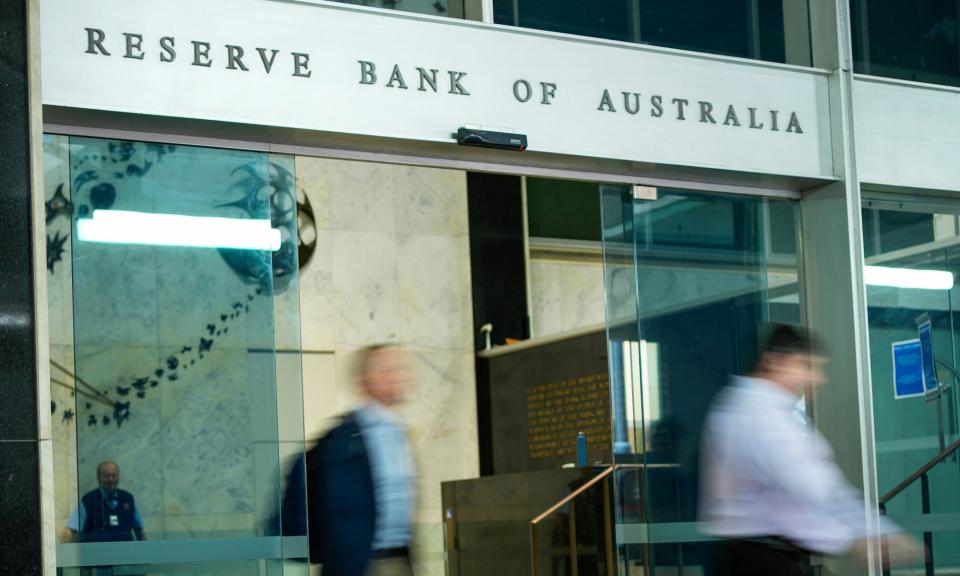Bracket creep is cooling Australia’s economy – it’s good news for interest rates but not for household budgets

Philip Lowe used his final speech as Reserve Bank governor to call on fiscal policy to “provide a stronger helping hand” in managing inflation so the central bank didn’t have to carry most of the load – and the ire.
“Raising interest rates and tightening policy can make you very unpopular, as I know all too well,” Lowe said on 7 September, 10 days before many battling borrowers cheered him out the door.
Lowe mused about the government’s so-called automatic stabilisers being more nimble. The budget would contract or swell more readily so the economy’s fate wouldn’t hinge so much on the RBA wielding its “blunt” interest rate tool.
It turns out those stabilisers are more responsive than anybody foretold. Even though the economy grew just 0.2% in the September quarter, the tax take soared, doing more to cool excessive consumption than higher interest rates.
Households coughed up $18.5bn in extra mortgage interest payments in the September quarter compared with two years earlier, bringing the tally to $29.7bn, Judo Bank’s chief economist, Warren Hogan, said.
The increase in households’ income taxes dwarfed that transfer, rising by $25.8bn over the period to $90.9bn in the September quarter.
The tax take was “rocketing”, rising 28% in the past year, Hogan said. “[It’s] the highest since the [19]70s and back then inflation was much much higher.”
Bracket creep, in other words, looked more like bracket leap, as inflation shoved more people into higher income tax rates.
The treasurer, Jim Chalmers, who will reveal the government’s mid-year economic and fiscal outlook (Myefo) next week, unsurprisingly focused on the positives.
“One of the reasons why the revenue has been stronger is because more people are working more and earning more,” Chalmers said. “That has implications for the budget but our primary reason for wanting that is so that people can meet the cost of living and provide for their loved ones.”
More than a few economists were taken aback by the jump in tax burden.
That escalated quickly... pic.twitter.com/rzrC2SFyoU
— Alex Joiner (@IFM_Economist) December 6, 2023
Cherelle Murphy, EY’s chief economist for Oceania, said taxes paid minus social benefits amounted to 14% of households’ gross disposable income, the highest on record.
“The government is kind of letting the automatic stabilisers help the Reserve Bank by slowing down the consumer,” Murphy said. Consumption was flat in the September quarter in part because “we’re all paying way more tax”.
Luci Ellis, Westpac group’s chief economist and a former assistant RBA governor, said the end of the low- and middle-income tax offset a year ago explained some of the tax increase but the key was not indexing tax brackets to inflation as happens elsewhere.
“Fiscal policy is doing more than monetary policy,” Ellis said, adding the government notched a surplus in 2022-23 and is “likely to run another surplus this financial year”.
Back-to-back surpluses seem to be more than a fair chance.
In the May budget, Treasury forecast a $4.2bn surplus for last year and it came in at $22.1bn instead. The current year’s deficit was tipped to be $13.9bn but the economy and particularly the labour market have been stronger than expected, as have been key commodity prices.
That leaves Chalmers with a “politically tricky” message next week and beyond, Hogan said.
Trumpeting fiscal strength won’t inspire much joy from voters handing over their hard-earned, and only stoke demand for more cost-of-living relief.
The weak economy probably means the next RBA rates move – short of an inflation surprise next month – will be a cut. It seems the unpopularity Lowe fretted over is now shifting from Sydney’s Martin Place to the ACT home of Treasury on Langton Crescent.

 Yahoo Finance
Yahoo Finance 